Embarking on a hike, only to be greeted by an unexpected downpour or sudden chilly gusts of wind can be quite the adventure! Surely I’m not the only one who’s had surprise encounters with Mother Nature unprompted whims on the trail, am I? But don’t worry, after some meticulous research coupled with my fair share of personal trial and error, I’ve compiled nine key nuggets of wisdom that will help you navigate any weather surprises during your hikes.
Let’s dive into this valuable knowledge together so we can make your future hikes enjoyable escapades – no matter what nature decides to toss our way!
Key Takeaways
- Know when to turn back if the weather becomes dangerous or challenging.
- Carry extra food, water, and warm clothes in case of emergency or unexpected weather changes.
- Learn how to read the terrain and find suitable shelter during bad weather hikes.
- Use proper gear and techniques to stay comfortable and dry in the rain or cold.
Tips for Hiking in Bad Weather
Know when to turn back if the weather conditions become too dangerous or challenging.
Know when to turn back
Taking a hike and the weather turns bad? Stay safe! It’s vital to know when to turn back. We cannot control nature, but we can respond smartly. Seeing the start of storm clouds, it’s best to head back.
Storms bring not just risky rain but also strong winds that can harm us on trails. I find that knowing wind patterns helps me stay out of danger spots on hikes. Spotting areas with heavy rainfall is another top tip; these are places where I avoid setting up camp or taking breaks.
When our clothes get wet, our safety goes down fast, so it’s better to exit early than be sorry after!
Don’t forget to snack
Snacking on a hike is like fueling up a car for a long drive. Just as cars need gas to run, our bodies need food to keep going. Eating small snacks during your hike keeps your energy levels high.
This helps you fight off fatigue and stay strong.
In bad weather, this becomes even more vital. Cold can drain your body’s energy fast. Snacks rich in protein and healthy fats give you the extra boost you need to face the challenge ahead! They are also great for keeping your spirits up when the weather gets tough.
So make sure not to brave the trails without packing some nourishment!
Prioritize finding a place to camp
I never take camping lightly on my hikes. I always keep in mind the weather conditions. If a storm is coming, I look for a safe place to camp right away. The way the wind blows can help me pick the best route for this.
It’s even harder when I hike at high spots. But with good training, I am ready for it all! On bad days, leaving the trail and setting up camp is the wise move. Safety first always!
Always carry an emergency beacon
Carrying an emergency beacon is crucial when hiking in bad weather. It’s important to be prepared for any situation that may arise, and having a distress beacon can save your life.
These beacons are powerful enough to send out a distress signal even in extreme weather conditions, ensuring that help will come if you need it. So before you head out on your hike, make sure to pack this essential piece of gear and keep yourself safe during your outdoor adventures.
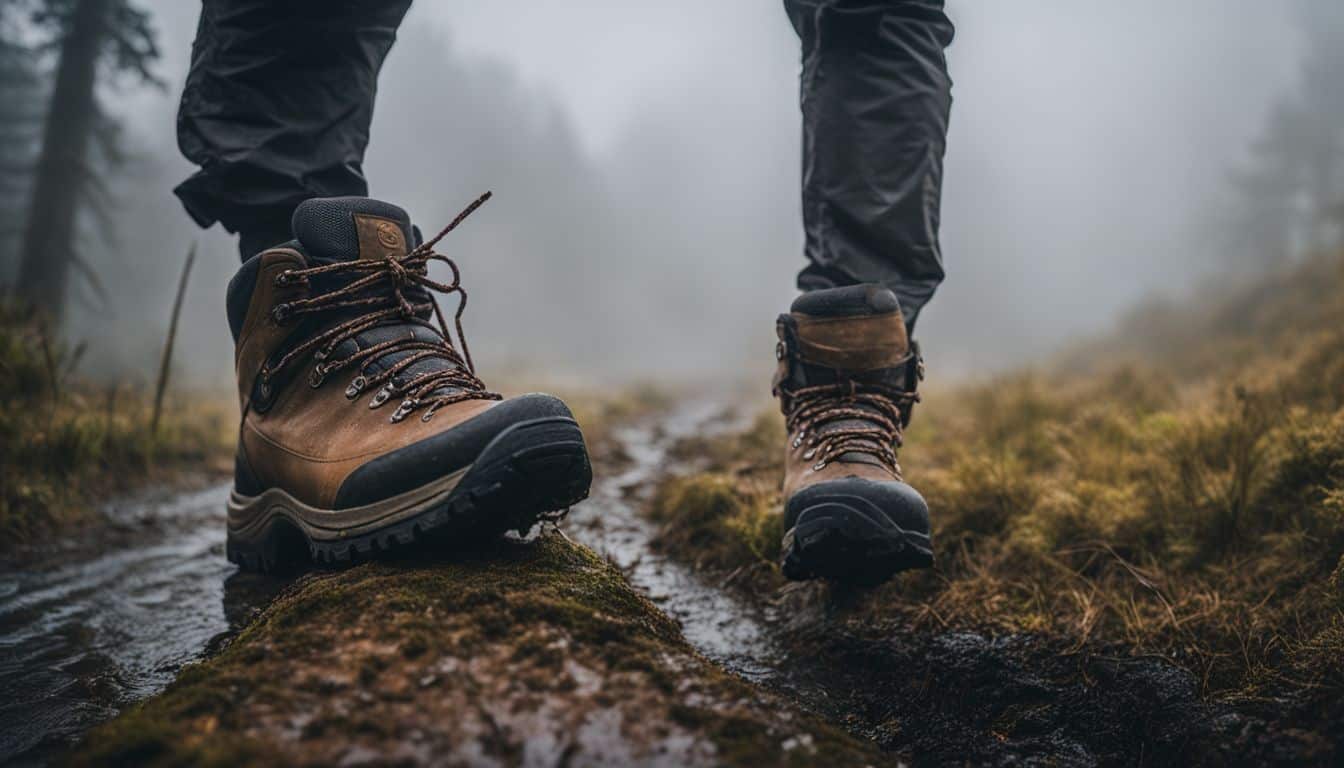
Carry an emergency shelter
Carrying an emergency shelter is crucial when hiking in bad weather. It provides a safe place to seek refuge and protect yourself from rain, wind, or even sudden temperature drops.
Having a waterproof and dry shelter ensures that you can stay warm and dry, reducing the risk of hypothermia or other weather-related illnesses. It’s important to avoid seeking shelter under trees or tall structures during lightning storms as they can attract lightning strikes.
Instead, find a low-lying area away from exposed ridges or peaks. By carrying an emergency shelter, you are prepared for unpredictable weather conditions and can hike with confidence knowing that you have a reliable place to take cover if needed.
Pack extra warm clothes
When hiking in bad weather, it’s important to pack extra warm clothes. Dressing in layers is key to staying warm and adjusting to changing temperatures. You should have insulating garments like thermal socks and fleece jackets, as well as moisture-wicking fabrics and synthetic base layers.
It’s also a good idea to bring waterproof clothing and windproof outer layers that are made of breathable fabrics. By packing extra warm clothes, you’ll be prepared for any unexpected weather conditions during your hike.
Regulate your temperature to avoid sweating
To stay comfortable during hikes in bad weather, it’s important to regulate your body temperature and avoid sweating. This is because sweating can lead to discomfort and potential health issues.
One way to regulate your temperature is by wearing lightweight, loose-fitting clothing made of breathable materials like nylon and polyester. These materials allow air to flow through, helping to keep you cool.
Additionally, choosing moisture-wicking fabrics like merino wool can help draw sweat away from your skin, keeping you dry and preventing overheating. By paying attention to your body’s temperature and making smart clothing choices, you can have a more enjoyable hiking experience in any kind of weather!
Carry extra food and water
When hiking in bad weather, it’s crucial to carry extra food and water. It’s important to have enough provisions to sustain yourself during unexpected situations or if you get stranded due to severe weather conditions.
Additionally, leaving extra supplies in your vehicle can be helpful for post-hike recovery, especially in desert hiking conditions. So always make sure you have enough survival supplies like emergency rations and hydration essentials to keep you nourished and hydrated throughout your hike.
You never know when you might need them!
Learn how to read the terrain
Understanding the terrain is crucial when hiking in bad weather. It helps us avoid the worst conditions and find suitable shelter. By reading the landscape, we can navigate difficult terrain and interpret our surroundings for signs of changing weather.
Assessing the terrain allows us to make safe decisions about where to go and how to adapt. So, take the time to learn how to read the terrain—it will enhance your hiking experience and keep you prepared for whatever Mother Nature throws your way!
Staying Comfortable in the Rain
When hiking in the rain, it’s important to stay as comfortable and dry as possible.
On the trail
When hiking in the rain, it’s important to stay comfortable and dry on the trail. To do this, make sure you have rainproof clothing that will keep you protected from the elements. Check the weather forecast before your hike so you know what to expect.
Choose moisture-wicking materials for your clothing to help keep you dry from sweat. Layering is key, so wear insulating layers to stay warm. Don’t forget about hand and foot protection – waterproof gloves and boots are essential.
By being prepared with the right gear, you can adapt to changing weather conditions and enjoy your hike while staying safe and comfortable on the trail.
In camp
When camping in the rain, it’s important to take steps to stay dry and comfortable. Setting up a rain fly shelter as soon as you arrive at the campsite is crucial. This will protect you from getting wet and ensure that your sleeping area stays dry.
Don’t forget to use a waterproof ground cloth under your tent for added protection against water seeping through the bottom. Properly covering your tent with a rainfly will also help prevent any leaks or drips during heavy rainfall.
By following these tips, you can have a pleasant and enjoyable camping experience, even when it’s raining outside. Stay cozy and dry!
Key gear for rainy hikes
When hiking in rainy weather, it’s important to have the right gear to stay comfortable and dry. Here are some key items you should consider bringing with you:
- Waterproof clothing: Invest in a good quality rain jacket and pants that are made of waterproof material. This will help keep you dry even in heavy downpours.
- Moisture management: Choose clothing made from moisture-wicking fabrics like merino wool or synthetic materials. These fabrics help to draw sweat away from your body, keeping you dry and preventing chills.
- Insulation: Layering is crucial in wet weather. Make sure to wear insulating layers such as a fleece or down jacket underneath your waterproof outer layer to keep warm.
- Breathable materials: Look for rain gear that is made from breathable materials. This will allow moisture to escape, preventing you from feeling clammy and uncomfortable.
- Quick-drying fabric: Opt for quick-drying clothing, especially for your base layers and socks. This will ensure that even if you do get wet, your clothes will dry faster, reducing the risk of hypothermia.
- Odor control: Choose clothing with odor-resistant properties or bring along an extra set of clothes to change into if needed. Wet clothes can start to smell after a while, so it’s important to manage odors on longer hikes.
- Rain gear: Don’t forget items like a waterproof hat or cap, gloves, and gaiters to protect your hands, head, and feet from getting soaked.
- Waterproof footwear: Invest in hiking boots or shoes that are specifically designed for wet conditions and have a good grip on slippery surfaces.
- Waterproof backpack: Consider using a backpack with built-in rain cover or invest in a separate rain cover for your pack to protect your gear from getting wet.
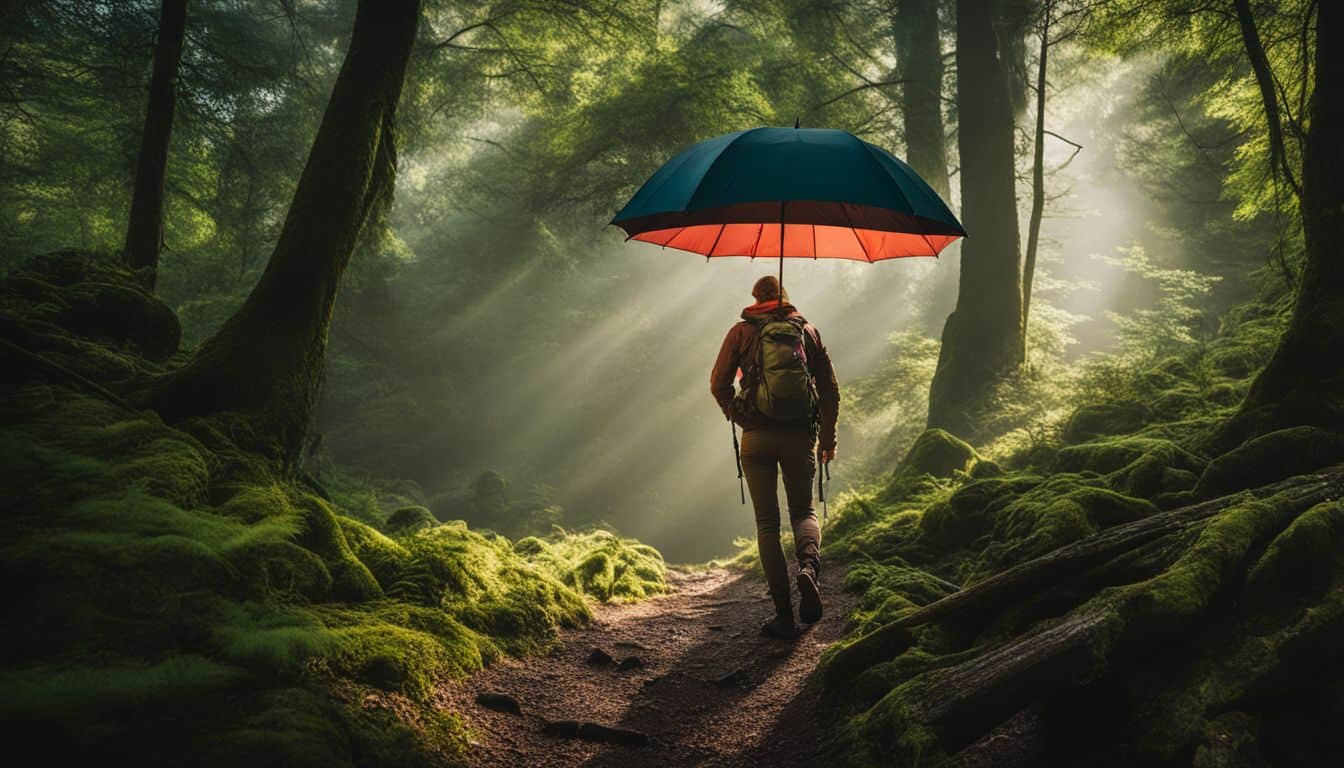
How to deal with the rain as a guide
When guiding hiking trips in rainy conditions, it’s important to be prepared and ensure the comfort and safety of your group. First, make sure you have rain-resistant clothing like waterproof jackets and pants.
These will keep you dry while allowing moisture to escape to prevent excessive sweating. Additionally, consider using moisture-wicking fabrics for your base layers to keep you comfortable.
Next, invest in good quality rain gear such as breathable rainwear and rainproof backpack covers. This will not only protect you from the rain but also keep your gear dry throughout the hike.
Stay updated with the weather forecast before heading out so that you can adjust plans accordingly. It’s important to know when it’s best to wait for a break in the weather or turn back if conditions become too risky.
Rigging a kitchen tarp
Rigging a kitchen tarp is a smart way to stay comfortable in the rain during your hike. With a lightweight tarp and some basic equipment, you can create a sheltered area where you can cook and eat without getting wet.
Simply find two sturdy trees or use trekking poles to set up the tarp overhead, creating a waterproof roof over your outdoor dining area. This not only keeps you dry while cooking but also provides a nice spot to relax and enjoy your meal without worrying about the rain.
So, don’t forget to pack a portable tarp for your next hiking adventure!
Staying Comfortable in the Cold
Bundle up with key gear to stay warm during cold hikes, and learn how to find a comfortable campsite in chilly temperatures.
Key gear for cold hikes
When hiking in cold weather, it’s important to have the right gear to stay warm and comfortable. Here are some key items you should consider packing:
- Insulated Jacket: A high-quality insulated jacket will help trap your body heat and keep you warm.
- Moisture-Wicking Base Layers: These are the layers closest to your skin, and they should be made of materials that wick away moisture and sweat to keep you dry.
- Breathable Mid-Layers: Choose mid-layers that provide insulation while allowing moisture to escape. Fleece or synthetic materials are good options.
- Windproof Outer Shell: A windproof jacket or shell is crucial for blocking out cold winds that can make you feel even colder.
- Waterproof Pants: To protect yourself from snow or rain, invest in waterproof pants that will keep you dry.
- Thermal Underwear: Thermal underwear is designed to provide extra warmth in colder temperatures.
- Warm Hat and Gloves: Heat is lost through the head and extremities, so a good hat and pair of gloves are essential for keeping these areas warm.
- Thermal Socks: Invest in thick wool or thermal socks to keep your feet warm and prevent frostbite.
How to deal with the cold as a guide
As a guide, it’s important to know how to deal with the cold during hikes. One tip is to wear a scarf with fewer layers, which can trick your brain into feeling warmer. Layering is also key – make sure to dress in multiple layers so you can adjust your clothing as needed.
Insulating your feet with a square of closed-cell foam during breaks can keep them warm. It’s also crucial to bring extra dry clothing and encourage your body to adapt to the cold weather.
Remember these tips and you’ll be able to stay comfortable in the cold while guiding others on their hiking adventures!
Finding a comfortable campsite
When camping in cold weather, finding a comfortable campsite is crucial for a good night’s sleep. Look for flat ground away from any potential hazards like falling branches or snowdrifts.
Clear away any rocks or debris before setting up your tent. Consider choosing a spot with natural windbreaks like dense trees or rock formations to block the cold winds. If possible, try to find a location that gets some sunlight during the day to help warm up your campsite.
Selecting the right campsite can make all the difference in staying warm and cozy during your winter camping adventure.
Staying Comfortable in the Wind
To stay comfortable in the wind, make sure to pack wind-resistant clothing and secure your gear properly. Don’t let strong gusts ruin your hike – find out more about how to conquer windy conditions here!
Key gear for hiking in the wind
When hiking in windy conditions, having the right gear is essential. Here are some key items to consider:
- Windproof clothing: Invest in a good-quality windbreaker or jacket that can block out the wind and keep you warm.
- Fleece jacket: A fleece jacket is a great insulating layer that provides warmth while also being breathable.
- Base layer: Choose a moisture-wicking base layer that will help keep you dry and comfortable.
- Synthetic materials: Opt for synthetic materials for your clothing, as they dry quickly and provide insulation even when wet.
- Moisture-wicking socks: Wearing moisture-wicking socks will help prevent blisters and keep your feet dry during windy hikes.
- Gaiters: Gaiters are useful for protecting your legs and ankles from wind, debris, and moisture.
- Neck gaiter: A neck gaiter can be worn to protect your neck and face from cold winds.
Staying Comfortable in the Heat
To stay comfortable in the heat, it’s important to have key gear like a wide-brimmed hat and lightweight, breathable clothing that provides sun protection.
Key gear for hiking in heat
When hiking in hot weather, it’s important to have the right gear to stay comfortable and safe. Here are some key items you should consider bringing:
- Breathable clothing: Opt for lightweight and moisture-wicking fabrics that allow air circulation and help sweat evaporate quickly.
- Light-colored attire: Choose white, tan, or khaki colors as they reflect sunlight instead of absorbing heat.
- Loose-fitting garments: Wear loose clothes that allow air to flow freely around your body and prevent overheating.
- Sun protection: Don’t forget to wear sunscreen with a high SPF rating and apply it regularly. Also, consider wearing sunglasses to protect your eyes from harmful UV rays.
- Headwear: A sun hat or wide-brimmed hat is essential to shield your face, neck, and ears from the direct sun.
- Hydration: Carry enough water to stay hydrated throughout your hike. It’s crucial to drink regularly even before feeling thirsty.
- Electrolyte supplements: To replenish electrolytes lost through sweating, bring along sports drinks or electrolyte powders.
How to deal with the heat as a backpacker editor
As a backpacker editor, I understand the challenges of hiking in hot weather. It’s important to take steps to prevent overheating and stay comfortable on your hikes. One key tip is to acclimate your body to the heat before heading out on a long hike.
This can be done by gradually spending more time outside in hot conditions and increasing your activity level. Another strategy is to use cooling techniques such as wearing lightweight, breathable clothing and using sunscreen to protect against sunburn.
Hydration is crucial when hiking in hot weather, so make sure to drink plenty of water throughout your journey. Lastly, it’s important to know your limits and not push yourself too hard in extreme temperatures.
Comprehensive Guide on Adapting to Changing Weather During Hikes
When hiking, it’s essential to be prepared for changing weather conditions. Here is a comprehensive guide to help you adapt:.
– Understanding weather patterns: Knowing how the weather can change based on elevation and temperature is crucial for planning your hike effectively.
– Dressing appropriately: Wear layers that can be easily added or removed as needed. Consider the terrain and potential weather conditions when choosing clothing.
– Protecting against rain: To prevent water from getting inside your sleeves during rainfall, avoid raising your arms. Ensure you have proper rain gear like a waterproof jacket and pants.
– Cold weather tips: In cold temperatures, layer up with thermal clothing and insulating layers. Pay attention to extremities like hands, feet, and head by wearing gloves, warm socks, and a hat.
– Hot weather guidelines: When hiking in hot temperatures, start early in the day to avoid peak heat hours. Stay hydrated by drinking plenty of water throughout the hike. Familiarize yourself with signs of heat exhaustion to recognize them if they occur.
Remember that these are just general guidelines. Always check local resources or consult experts for specific information about your hiking destination’s unique climate patterns and considerations.
Recommended For You
Looking for more hiking tips and tricks? Check out our recommended articles on backpacking while pregnant, packing a backpack for a hiking trip, the ultimate backpacking checklist, and cold-weather camping tips to keep you warm while you sleep.
Happy hiking!
Tips for backpacking while pregnant
When backpacking while pregnant, it’s important to prioritize your safety and the well-being of your baby. Here are some tips to keep in mind: First, consult with your doctor before embarking on a backpacking trip.
They can provide guidance specific to your pregnancy and any potential risks you should be aware of. Second, avoid high altitude hikes and sleeping at elevations above 9,800 feet as recommended by obstetricians.
This helps ensure adequate oxygen levels for both you and your baby. Additionally, it’s best to refrain from clipping the hipbelt while backpacking as it may cause discomfort or put pressure on the abdomen.
How to pack a backpack for a hiking trip
Are you planning a hiking trip? Here are some tips on how to pack your backpack for a comfortable and enjoyable experience:
- Utilize the sleeping bag compartment: Some backpacks have a special compartment at the bottom specifically designed for your sleeping bag. This keeps it separate from the rest of your gear and easily accessible.
- Use packing techniques: There are tricks and techniques you can use to maximize space in your backpack. Roll your clothes instead of folding them, and use compression sacks or packing cubes to reduce bulk.
- Hoist your backpack properly: When lifting your loaded backpack onto your shoulders, bend at the knees and use your leg muscles to lift it up. This helps prevent strain on your back.
- Fill empty spaces with camp clothes: If you have any open spaces in your backpack, fill them with lightweight camp clothes like extra socks, underwear, or a hat. This helps utilize all available space efficiently.
- Include essential gear: Make sure to pack important gear such as a backpacking tent, air mattress, camping stove with pot, and a rain cover. These items will ensure you’re prepared for different weather conditions during your hike.
- A well – packed backpack reduces physical stress during hikes.
- Dress in layers and carry moisture – wicking clothing to adapt to changing weather conditions.
- Don’t forget to include a warm hat for colder temperatures.
The ultimate backpacking checklist
Preparing for a backpacking trip can be daunting, but with the ultimate backpacking checklist, you’ll have everything you need to hit the trail with confidence. Here are the essential items to pack:
- Backpacking essentials
- Backpacking gear list
- Backpacking clothing items
- Backpacking accessories
- Trail confidence
- International travel preparation
Cold-weather camping tips to keep you warm while you sleep
Winter camping can be a chilly adventure, but with the right tips, you can stay warm and cozy in your tent. Here are some cold-weather camping tips to help you sleep comfortably:
- Smooth out the ground: Before getting into your tent, make sure to smooth out the area where you’ll be sleeping. This helps to eliminate any uncomfortable bumps or rocks.
- Find a sheltered spot: When setting up your tent in the snow, choose a location that is protected from the wind and free from avalanche dangers. This will provide additional insulation and keep you warmer throughout the night.
- Wear dry clothes: Changing into dry clothes before bed is crucial for staying warm. Wet or damp clothing can make you feel colder during the night, so make sure to wear something dry and comfortable.
- Avoid sweaty clothes: It’s important not to wear sweaty hiking clothes to bed as they can cause you to feel even chillier. Take some time to cool down and change into fresh clothes specifically designated for sleeping.
- Dress in layers: Layering is key when camping in cold weather. Wear multiple thin layers rather than one thick layer, as this allows for better insulation and gives you the option to adjust your clothing as needed.
- Insulate your tent: Take steps to insulate your tent for winter camping. Use a footprint or groundsheet under your tent to prevent heat loss through the floor, and consider adding an extra layer of insulation by placing foam pads or rugs inside.
- Use a good sleeping bag: Invest in a high-quality sleeping bag that is rated for cold temperatures. Look for bags with proper insulation and consider using a liner or thermal blanket inside for added warmth.
- Warm up before bed: Engage in light exercises or activities that get your blood flowing before crawling into your sleeping bag. This will help raise your body temperature and keep you warmer throughout the night.
- Keep a hot water bottle: Fill a leak-proof water bottle with hot water before bed and place it in your sleeping bag. This can provide extra warmth during the night and help you stay cozy.
Conclusion on Adapting To Changing Weather During Hikes
In conclusion, mastering the art of adapting to changing weather during hikes is essential for any hiking enthusiast. By following these 9 tips, including knowing when to turn back and carrying extra supplies, you can ensure a safe and enjoyable hiking experience in any weather condition.
So gear up, stay prepared, and embrace the unpredictable nature of the great outdoors!
FAQs on Adapting To Changing Weather During Hikes
1. How do I adapt to changing weather during hikes?
To adapt to changing weather during hikes, it’s important to check the forecast before going, dress in layers, bring rain gear, stay hydrated, and be prepared for unexpected changes.
2. What should I wear when hiking in changing weather?
When hiking in changing weather, it’s best to wear moisture-wicking clothing that can be layered for warmth or cooling. Also, don’t forget a hat and sunglasses for sun protection.
3. Should I carry extra supplies for sudden weather changes during hikes?
Yes, it is recommended to carry extra supplies such as an emergency poncho or waterproof bag to protect your gear from rain and a lightweight jacket for added insulation if temperatures drop unexpectedly.
4. What are some signs of impending bad weather during a hike?
Some signs of impending bad weather during a hike include darkening skies, strong winds picking up suddenly, distant thunder sounds or lightning flashes, and rapid drops in temperature.
5. How can I stay safe if caught in severe weather while hiking?
If caught in severe weather while hiking, seek shelter immediately by finding a sturdy building or low-lying area away from trees and water bodies. Avoid open spaces and tall objects like isolated trees or metal structures that attract lightning.


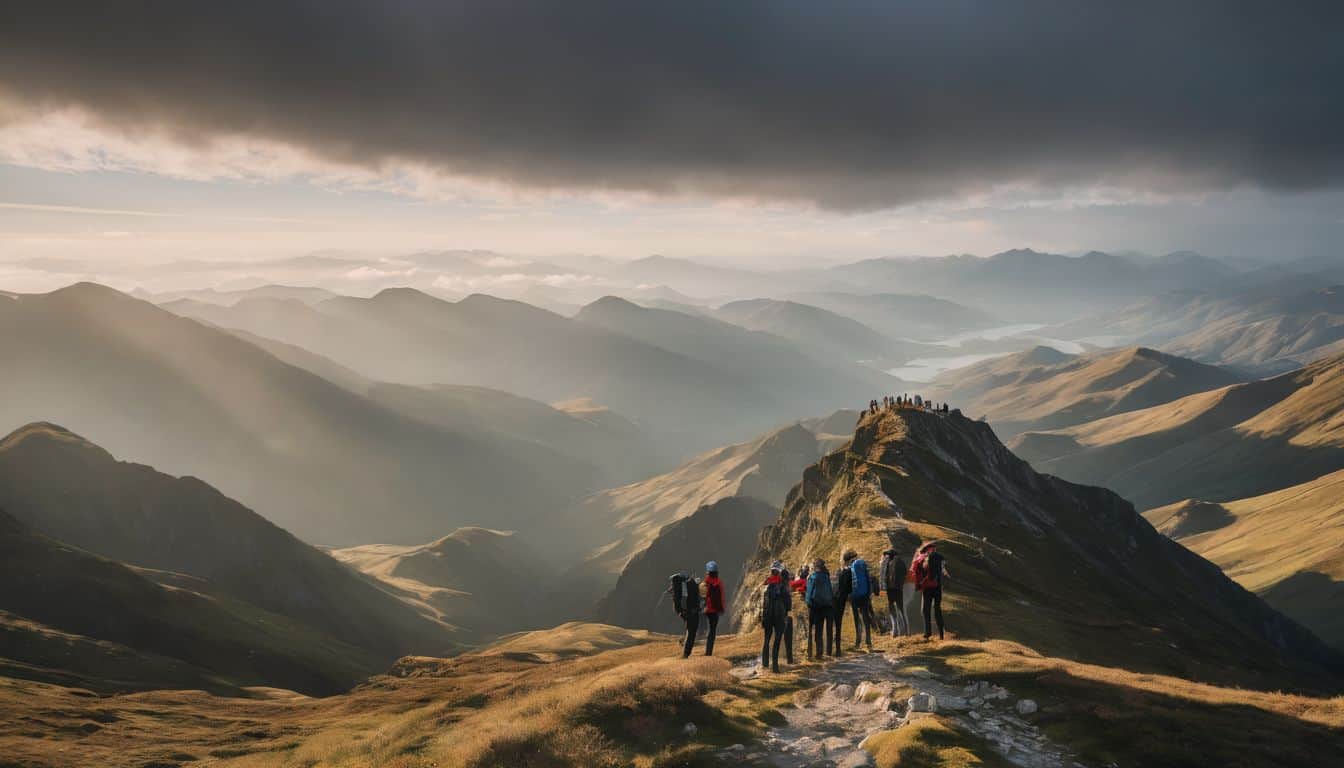
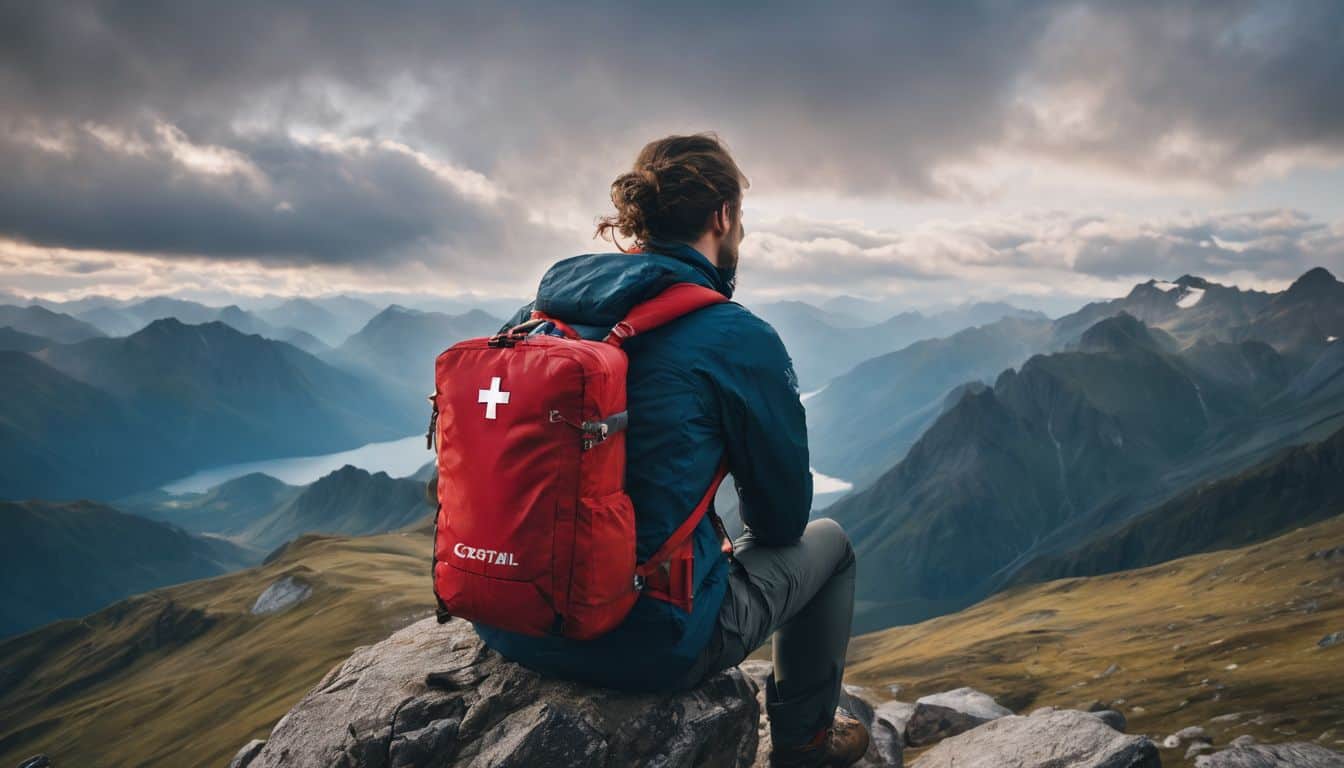
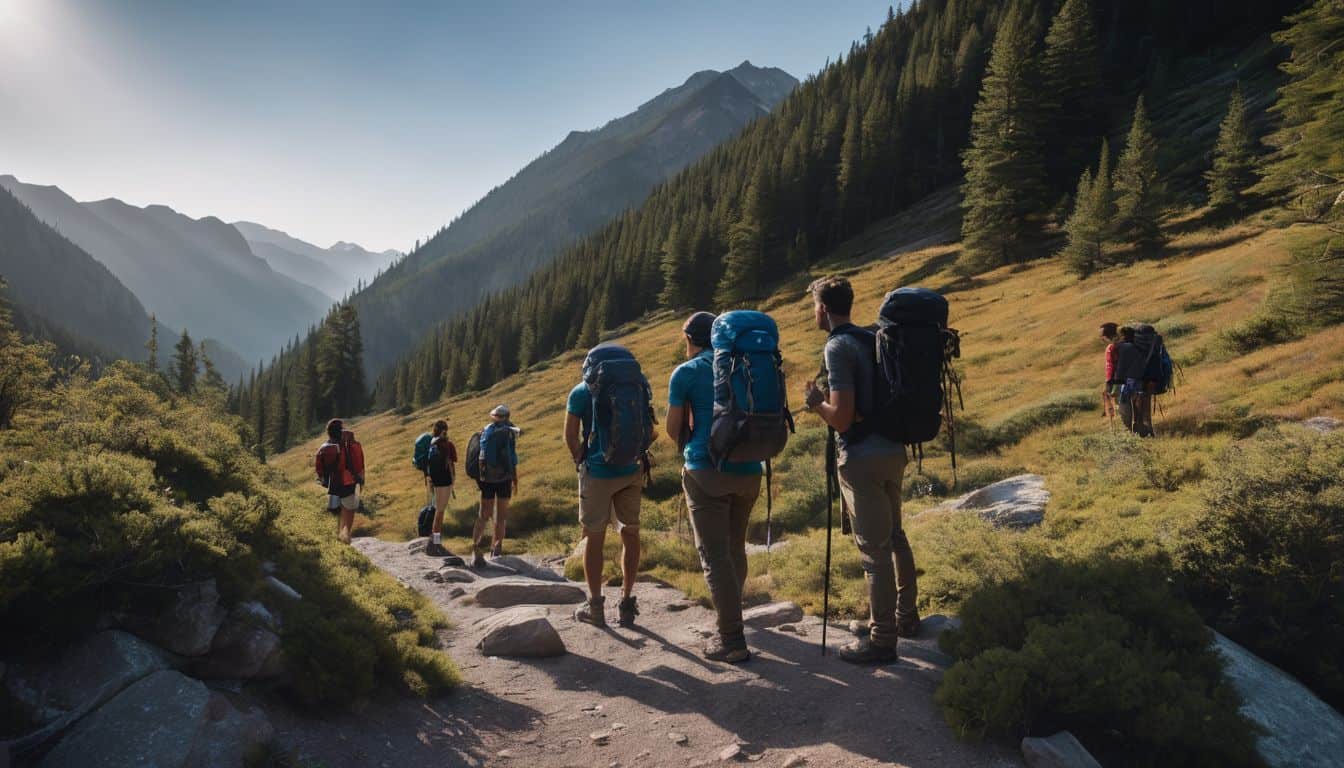
Leave a Reply